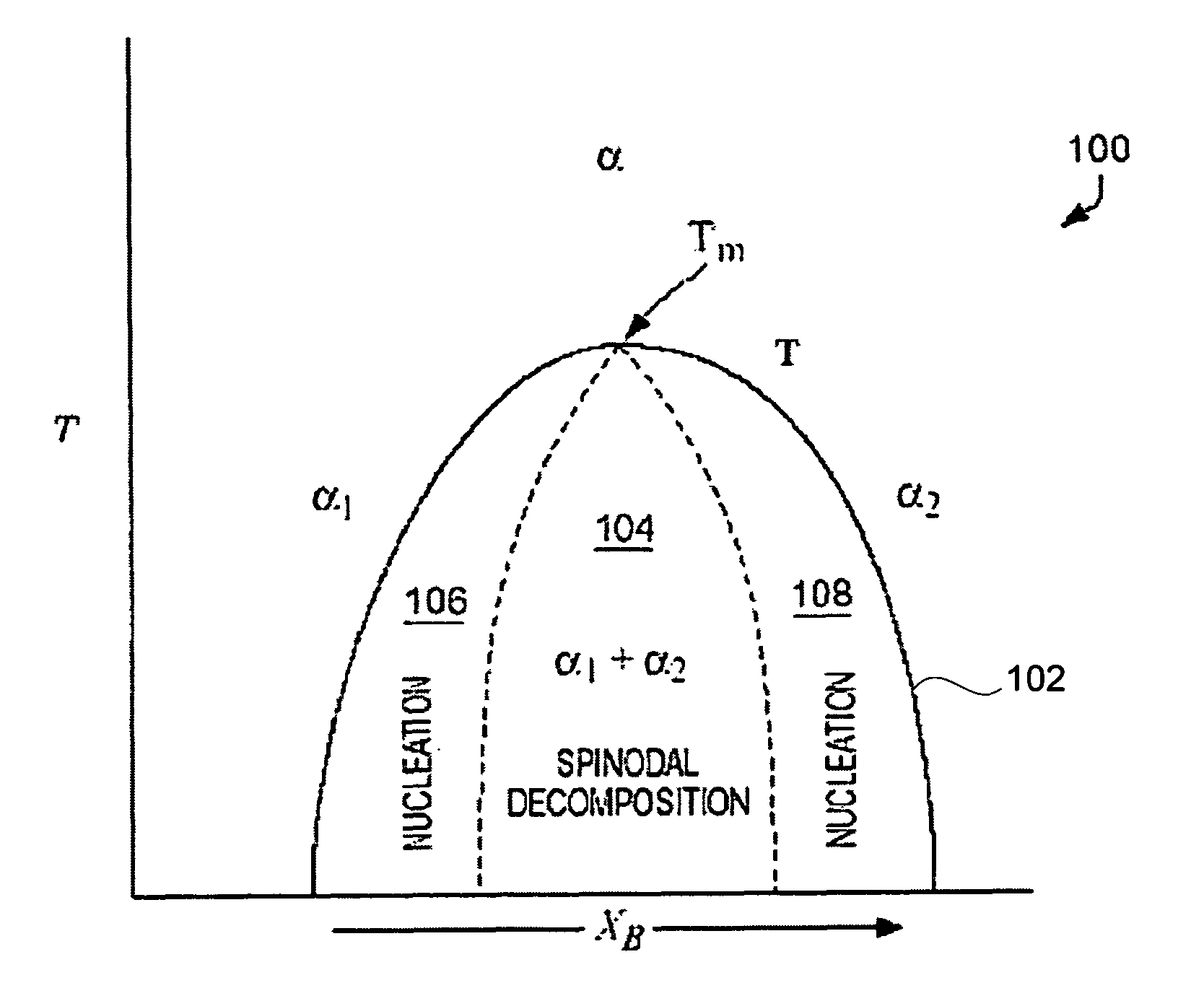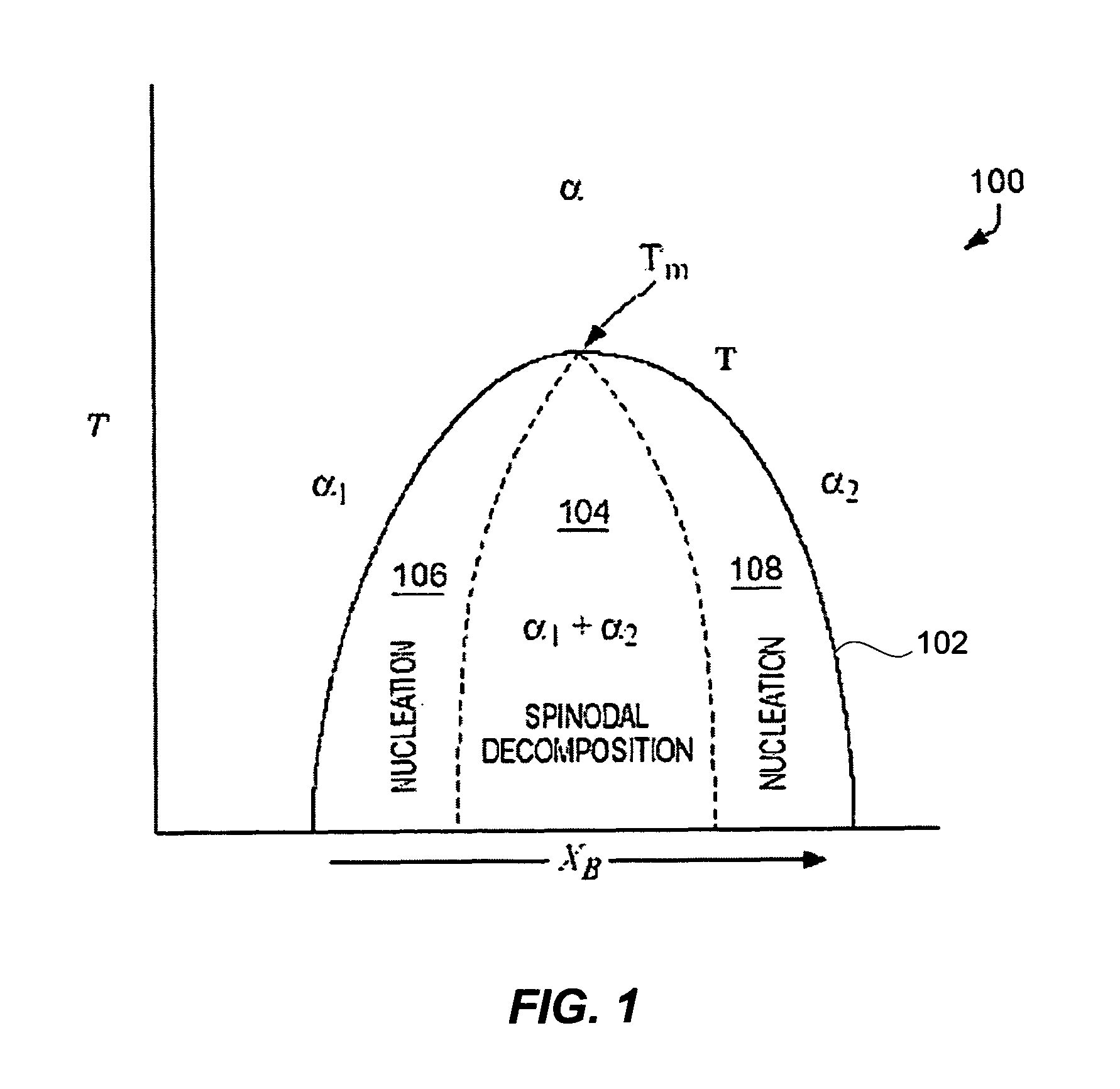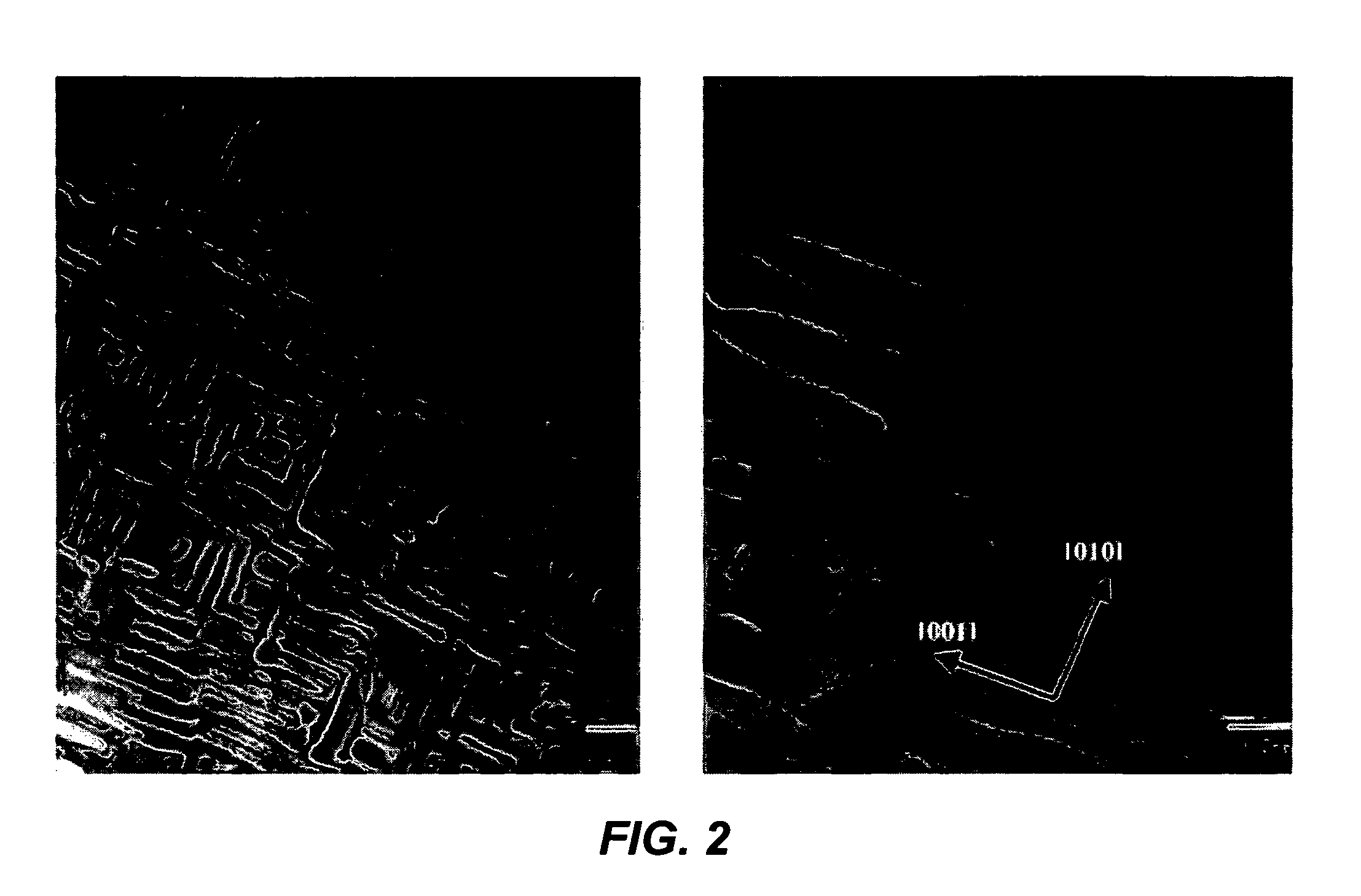High-strength nanostructured alloys
a nanostructured alloy, high-strength technology, applied in the field of new alloys, can solve the problems that the presence of mn in known alloys is considered detrimental to the properties of final products, and achieve the effect of exceptional strength or hardness
- Summary
- Abstract
- Description
- Claims
- Application Information
AI Technical Summary
Benefits of technology
Problems solved by technology
Method used
Image
Examples
example 1
Preparation and Characterization of Fe30Ni20Mn25Al25
[0038]A quaternary alloy of Fe30Ni20Mn25Al25 composition was prepared by well known arc melting and casting techniques. A quantity of material including 24 g Fe, 17 g Ni, 22 g Mn, and 10 g Al was placed in a water-cooled copper mold and heated until molten using the arc melting technique. Ingots were flipped and melted a minimum of three times under argon to ensure mixing. Quenching was done by allowing the alloy to rapidly cool in the copper mold to a temperature of ˜30° C. in approximately 10 minutes. In some embodiments, a 5% excess of Mn may be added to the starting materials because Mn accounts for the majority of weight loss during casting, which results from brittle sharding and evaporation.
[0039]FIG. 2 is a TEM image of the resultant two phase alloy taken along the [100] axis. The alloy had nanostructure including 50-60 nm wide B2-structured plates that were spaced 40-50 nm apart. The B2 phase had a composition Fe3Ni34Mn14...
example 2
Preparation and Characterization of FexNi50−xMnyAl50−y±5%
[0047]Various alloys have been cast with a composition:
FexNi50−xMnyAl50−y, Formula (2)[0048]wherein X ranges from 9 to 41, and[0049]Y ranges from 9 to 41.
[0050]The alloys were cast using the aforementioned arc melting technique. Test results confirm that the miscibility gap forms over a large composition range, and that mechanical and magnetic properties can be manipulated by composition variations in this range. Table 4 lists the alloys evaluated and resulting magnetic and mechanical properties.
[0051]
TABLE 4Hardness, Magnetic Coercivity and SaturationMagnetization of AlloysFeNiMnAlH (VPN)Coer (G)Sat. Mag (T)302020304778.80.113020302043656.30.12252520305140.10.225253020462990.125252525437540.2835152525467160.2915352525432540.21
[0052]In the case of Fe30Ni20Mn30Al20 Tm with respect to FIG. 1 was empirically determined to be 1544 K.
example 3
Characterization of Spinodal Phase Diagram
[0053]A spinodal phase diagram of the type shown as FIG. 1 may be constructed by varying percentages of Fe, Ni, Mn, Al and M as described in context of Formula (1), except the subscripts a, b, c, d, and e, may be any value. The constituents are processed as described in Examples 1 and 2 to ascertain the presence or absence of spinodal decomposition products, hardness, and magnetic moment. The preferred metals include combinations of Fe, Ni, Mn, and Al, in which case the ranges for X and Y shown in Formula (2) may be any value. When adjusting the respective subscripts a, b, c. d. e, X or Y, it is suggested to increase or decrease the individual ranges or combinations of ranges in steps of five percent from the values shown regarding Formula (1) and (2), at least until the resulting alloy does not show evidence of spinodal decomposition. It is also possible to repeat the study substituting Co for Ni, in whole or in part, to increase the magnet...
PUM
| Property | Measurement | Unit |
|---|---|---|
| yield strength | aaaaa | aaaaa |
| yield strength | aaaaa | aaaaa |
| temperature | aaaaa | aaaaa |
Abstract
Description
Claims
Application Information
 Login to View More
Login to View More - R&D
- Intellectual Property
- Life Sciences
- Materials
- Tech Scout
- Unparalleled Data Quality
- Higher Quality Content
- 60% Fewer Hallucinations
Browse by: Latest US Patents, China's latest patents, Technical Efficacy Thesaurus, Application Domain, Technology Topic, Popular Technical Reports.
© 2025 PatSnap. All rights reserved.Legal|Privacy policy|Modern Slavery Act Transparency Statement|Sitemap|About US| Contact US: help@patsnap.com



